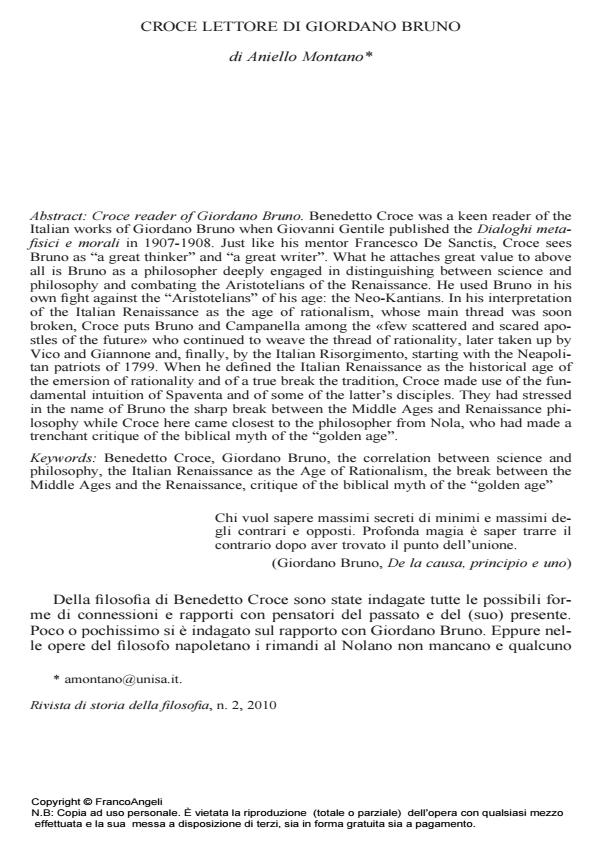Croce lettore di Giordano Bruno
Titolo Rivista RIVISTA DI STORIA DELLA FILOSOFIA
Autori/Curatori Aniello Montano
Anno di pubblicazione 2010 Fascicolo 2010/2
Lingua Italiano Numero pagine 34 P. 271-304 Dimensione file 728 KB
DOI 10.3280/SF2010-002004
Il DOI è il codice a barre della proprietà intellettuale: per saperne di più
clicca qui
Qui sotto puoi vedere in anteprima la prima pagina di questo articolo.
Se questo articolo ti interessa, lo puoi acquistare (e scaricare in formato pdf) seguendo le facili indicazioni per acquistare il download credit. Acquista Download Credits per scaricare questo Articolo in formato PDF

FrancoAngeli è membro della Publishers International Linking Association, Inc (PILA)associazione indipendente e non profit per facilitare (attraverso i servizi tecnologici implementati da CrossRef.org) l’accesso degli studiosi ai contenuti digitali nelle pubblicazioni professionali e scientifiche
Benedetto Croce was a keen reader of the Italian works of Giordano Bruno when Giovanni Gentile published the Dialoghi metafisici e morali in 1907-1908. Just like his mentor Francesco De Sanctis, Croce sees Bruno as "a great thinker" and "a great writer". What he attaches great value to above all is Bruno as a philosopher deeply engaged in distinguishing between science and philosophy and combating the Aristotelians of the Renaissance. He used Bruno in his own fight against the "Aristotelians" of his age: the Neo-Kantians. In his interpretation of the Italian Renaissance as the age of rationalism, whose main thread was soon broken, Croce puts Bruno and Campanella among the «few scattered and scared apostles of the future» who continued to weave the thread of rationality, later taken up by Vico and Giannone and, finally, by the Italian Risorgimento, starting with the Neapolitan patriots of 1799. When he defined the Italian Renaissance as the historical age of the emersion of rationality and of a true break the tradition, Croce made use of the fundamental intuition of Spaventa and of some of the latter’s disciples. They had stressed in the name of Bruno the sharp break between the Middle Ages and Renaissance philosophy while Croce here came closest to the philosopher from Nola, who had made a trenchant critique of the biblical myth of the "golden age".
Parole chiave:Benedetto Croce, Giordano Bruno, the correlation between science and philosophy, the Italian Renaissance as the Age of Rationalism, the break between the Middle Ages and the Renaissance, critique of the biblical myth of the "golden age"
Aniello Montano, Croce lettore di Giordano Bruno in "RIVISTA DI STORIA DELLA FILOSOFIA" 2/2010, pp 271-304, DOI: 10.3280/SF2010-002004